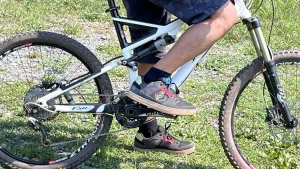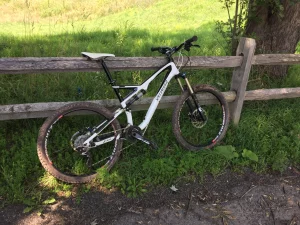The Best Guide to Choosing Bikes for Seniors

Table of Contents
Balance is the Key to Biking for Seniors
Balance is a critical factor for seniors when choosing a bike and biking in general. Your ability to balance plays a significant role in overall safety and enjoyment. As we age, our balance may naturally decline, increasing the risk of falls and accidents. Here are several reasons why balance is essential for biking among seniors:
- Injury Prevention: Good balance reduces the risk of falling or experiencing accidents while mounting, dismounting, or riding a bike.
- Increased Stability: A balanced and stable bike makes it easier for seniors to maneuver and control their bicycles, especially when encountering obstacles, turns, or uneven terrain.
- Confidence Booster: With improved balance comes increased confidence. Feeling steady and stable allows them to enjoy their rides without fear of tipping over or losing control, leading to a more enjoyable biking experience overall.
- Overall Fitness: Maintaining good balance helps improve core strength, stability, and overall fitness, benefiting daily life activities beyond cycling.
- Cognitive Health: Balancing on a bike engages the brain as well as the body. For seniors, biking can be a beneficial activity for cognitive health, as it requires concentration, coordination, and quick decision-making, all of which help keep the mind sharp.
- Functional Mobility: Balance is a fundamental aspect of everyday mobility. By practicing and improving balance through biking, seniors can enhance their overall functional mobility, making it easier to perform daily tasks and maintain independence as they age.
- Strength and Stability: Biking requires the use of various muscles, including those responsible for balance and stability. Regular biking can help seniors improve their strength and stability, contributing to better balance both on and off the bike.
- Core Strength: A strong core is essential for maintaining balance while biking. Engaging core muscles helps seniors stay upright and centered on the bike, reducing the risk of swaying or wobbling while riding.
What Do The Best Bikes for Seniors have in Common?
The best bikes for seniors share several key features that cater to the unique needs and preferences of older adults. When searching for the perfect bike, consider these common characteristics:
- Step-through Frames: Senior-friendly bikes typically feature a step-through or low-step frame design, making it easy for riders to mount and dismount without having to lift their leg over a high top tube, reducing the risk of falls. This is especially beneficial for seniors with limited mobility or flexibility.
- Lightweight Design: Lightweight bikes are easier to handle and maneuver, reducing strain on joints and muscles while making transportation and storage more manageable.
- Adjustability: The ability to adjust saddle height, handlebar position, and other components ensures a personalized fit for optimal comfort and control. This adaptability ensures optimal comfort and helps prevent strain or discomfort during rides.
- Wide, Padded Saddle: A wide and well-padded saddle helps provide ample support and cushioning, ensuring a comfortable ride, even on longer journeys. Additionally, some bikes may feature adjustable saddle height and angle to accommodate individual preferences and optimize comfort.
- Low Center of Gravity: Bikes with a lower center of gravity offer better stability and balance, making them more manageable for seniors.
- Safety Features: Reflective elements, integrated lights, and reliable braking systems contribute to a safer cycling experience, especially in low-light conditions or busy environments.
- Electric Assist: E-bikes can provide an extra boost for seniors, helping them tackle hills, headwinds, or longer rides without overexerting themselves.
- Easy-to-Use Gearing System: Seniors may prefer bikes with simple and intuitive gearing systems that make it easy to change gears smoothly while riding. Bikes equipped with internal hub gears or single-speed drivetrains require minimal maintenance and offer hassle-free shifting, ideal for seniors who may not be familiar with complex gear mechanisms.
- Stable Handling: Stability is crucial for seniors, especially those who may be less confident riders. Bikes with stable handling characteristics, such as wider tires, a longer wheelbase, and a relaxed steering geometry, inspire confidence and make it easier to maintain control, particularly at slower speeds or when navigating uneven terrain.
- Effective Braking System: Reliable brakes are essential for safety, especially for seniors who may require a little extra time to react to changing conditions. Bikes equipped with responsive and easy-to-modulate brakes, such as rim brakes or disc brakes, provide confident stopping power in various weather conditions and terrain types.
- Step-Through Accessories: Many senior-friendly bikes come equipped with accessories designed to enhance convenience and safety, such as fenders to protect against splashes, a rear rack for carrying groceries or other items, and lights for increased visibility during low-light conditions.
Overall, the best bikes for seniors prioritize comfort, safety, and ease of use, providing a smooth and enjoyable riding experience that encourages seniors to stay active and mobile for years to come.
Why You Should I Try Several Rides Before Buying?
- Comfort Assessment: Personal comfort varies greatly, and a test ride allows seniors to determine if a bike’s saddle, handlebars, and riding position feel comfortable and suitable for their body type.
- Handling and Maneuverability: Trying different bikes lets seniors assess how easy they are to control, steer, and balance. This is particularly important for those with reduced strength or mobility.
- Performance Comparison: Test riding various bikes enables seniors to compare features, such as gearing, braking, and suspension systems, ensuring they choose the best option for their specific needs.
- Size and Fit: Proper bike fit is crucial for comfort and injury prevention. By trying different sizes and models, seniors can find the perfect fit that accommodates their height, reach, and leg length.
- Personal Preference: Test rides help seniors discover their preferred riding style and bike type, whether it’s a leisurely cruiser, a versatile hybrid, or an electric-assisted bike.
- Expert Advice: Local bike shops often allow test rides and provide expert guidance on bike selection, fit, and maintenance, ensuring seniors make an informed decision.
Still Young To Ride
I hope you found this information helpful. Check out my other related posts such as balance exercises for seniors and managing shoulder pains. You can also refer to posts on managing cycling ankle injuries and patellar tendonitis. We also recorded a related podcast on injuries and prevention.




